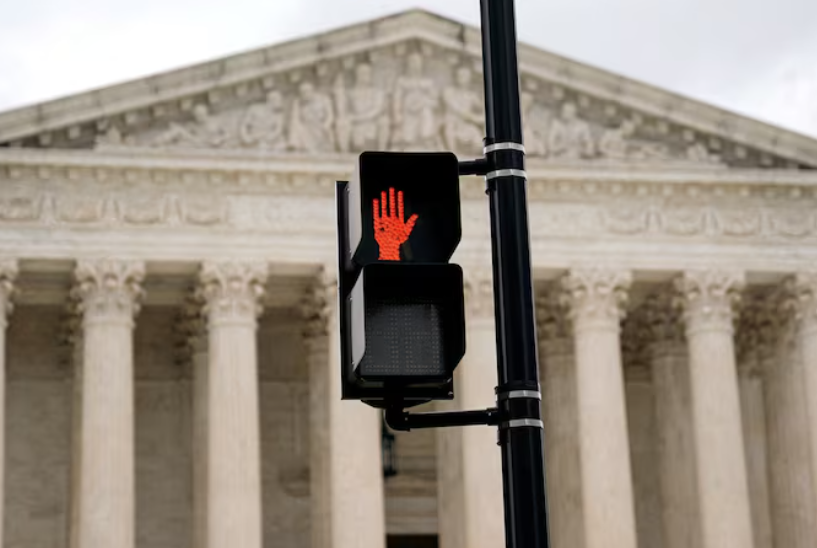Experts said the Supreme Court ruling eliminating the deference that courts owe to federal agencies in interpreting the laws they administer could sharply limit the National Labor Relations Board’s ability to enforce federal labor law. Most federal agencies craft policies through traditional rulemaking, and Friday’s decision is expected to impact every corner of the federal government. Conservative groups have pushed this case as part of a broader effort to rein in the powers of administrative agencies.
The NLRB rarely adopts broad rules. Instead, it interprets laws protecting workers’ rights to organize and join unions through decisions in individual cases. For decades, the agency has relied on courts to uphold its decisions, largely deferring to the board’s expertise in labor law complexities.
However, in Friday’s 6-3 ruling, the Supreme Court nixed a doctrine it adopted 40 years ago, known as “Chevron deference,” in a case involving oil company Chevron. This doctrine had required courts to defer to agencies’ interpretations of ambiguous laws as long as they were reasonable. “Agencies have no special competence in resolving statutory ambiguities. Courts do,” Chief Justice John Roberts wrote for the court.
Much of the focus on Chevron’s demise has centered on how it will hamper federal agencies’ ability to adopt new rules such as environmental and securities regulations. But legal experts said the ruling would likely lead federal courts to increasingly overturn labor board decisions and invite business challenges to labor policies that courts upheld decades ago.
In a 6-3 decision, the justices overturned a 1984 precedent that had given government agencies broad leeway in interpreting laws they administer. “Removing the thumb from the scale would leave reviewing courts with more traditional tools of statutory interpretation, which is precisely why labor law might experience massive change,” said David Broderdorf of the law firm Morgan Lewis & Bockius, who represents employers.
Some unions and worker advocates worry that giving courts more discretion in reviewing NLRB decisions will prevent the board from adjusting its interpretation of labor law to keep up with workplace changes, such as new technology or increased use of temporary contract labor. “Future NLRB decisions would likely be subject to heightened scrutiny, making it more difficult for the board to effectively protect American workers’ rights,” said Jeevna Sheth, a policy analyst at the Center for American Progress, a left-leaning think tank.
Several recent board rulings, widely seen as favoring unions, may now face more legal challenges. These include decisions allowing unionizing outside of the longstanding formal election process and extending legal protections to workers advocating for non-employees, such as interns or ex-coworkers who quit or were fired.
But other experts, including many management-side lawyers, say the change could temper the board’s tendency to revisit key policies each time control of the agency changes hands. In the last decade, the board has shifted its positions numerous times on various issues, such as when businesses must bargain with contract and franchise workers or when labor law protects vulgar or profane statements by workers in a labor dispute.
“The rulemaking and adjudications in which the NLRB engages are not based on any sort of technical expertise, but rather are based on the agency’s political makeup,” leading to extreme swings in policy, the National Right to Work Legal Defense Foundation said in an amicus brief it filed in the Supreme Court case. The group represents workers in disputes with unions.
The five-member board typically consists of three members from the president’s party and two from the opposing party. Members’ terms are staggered, so control of the board may not change hands for a year or more into a presidential administration. NLRB cases are heard by administrative judges and then the board, whose decisions can be reviewed by federal appeals courts.
Businesses often appeal NLRB rulings, and the agency frequently turns to appeals courts to enforce its decisions, such as orders requiring companies to bargain with unions or reinstate workers who were illegally fired. The board’s website says it wins about 80% of the roughly 65 appeals the agency is involved in each year. The high victory rate is rooted in a 1944 U.S. Supreme Court decision involving Hearst Publications, seen as a predecessor to Chevron. The court held that board decisions should not be overruled if they have a “reasonable legal basis.”
But Roberts in Friday’s decision said the Hearst decision involved “fact-bound determinations” by the board and not the interpretation of legal questions. This may embolden federal judges to overturn board decisions they disagree with, something courts have long avoided because of Hearst and Chevron. In February, for example, a Washington, D.C.-based appeals court upheld a longstanding board policy requiring employers that acquire other companies to bargain with their workers’ unions. However, one judge in a concurring opinion suggested he disagreed with the board and that the policy could be wiped out if the Supreme Court eliminated Chevron deference.

